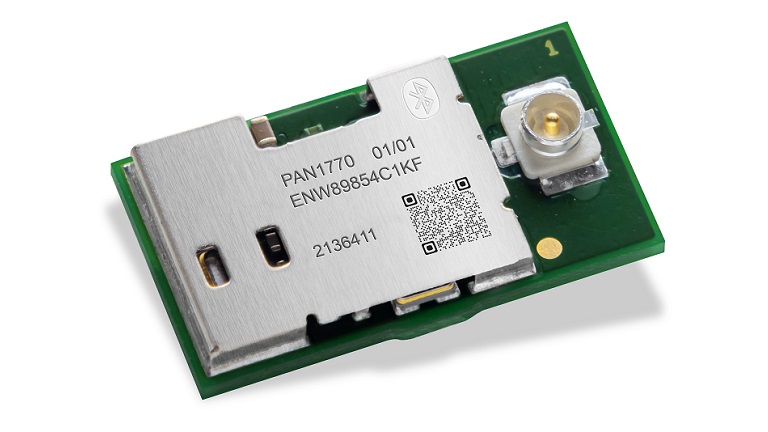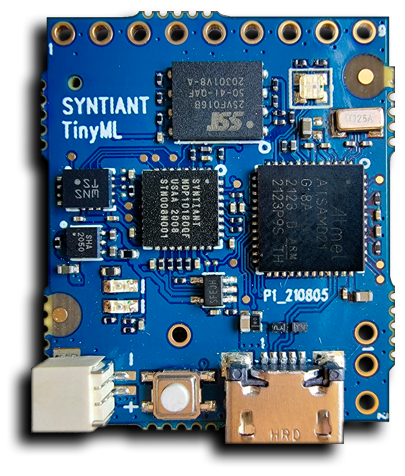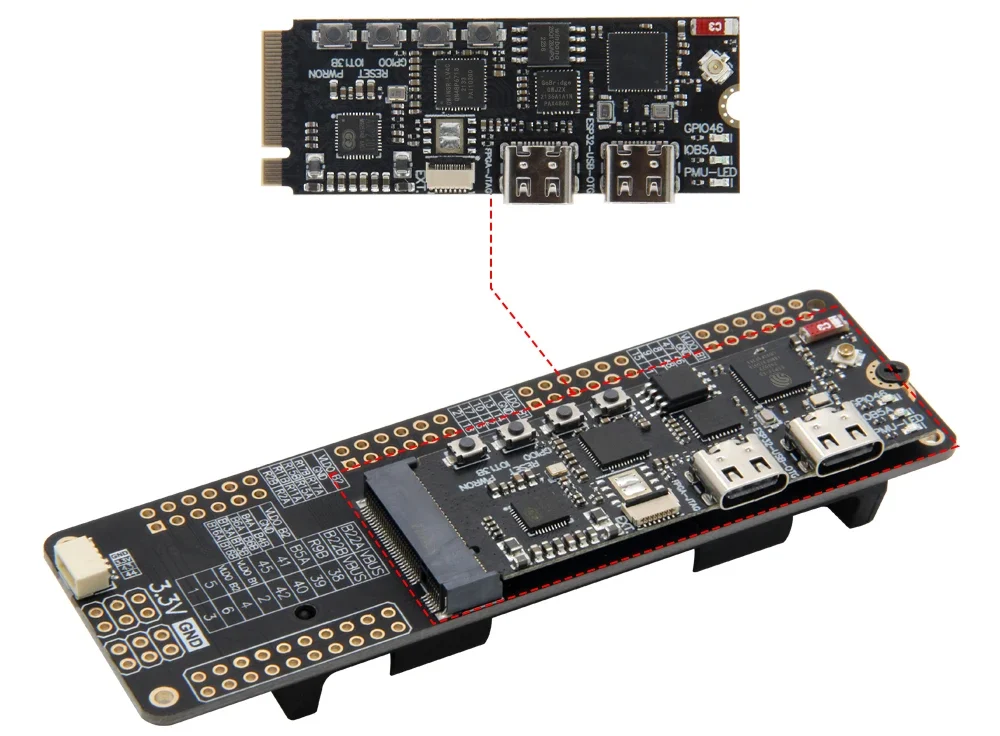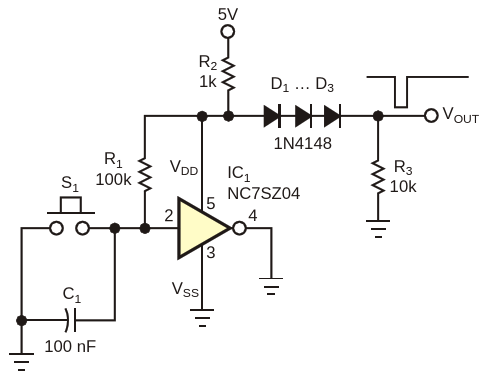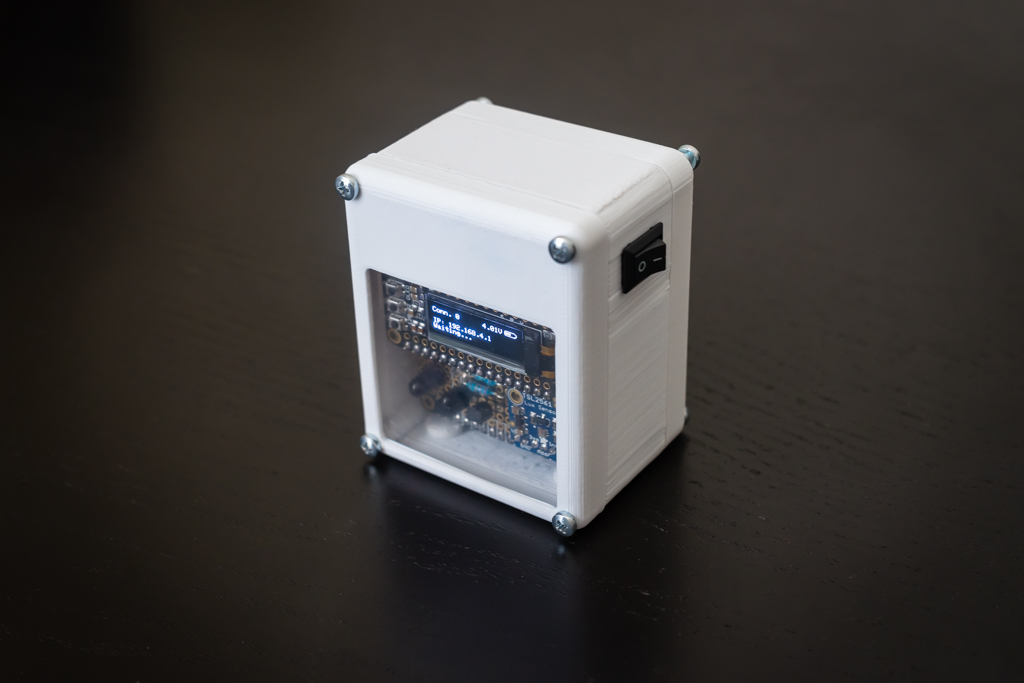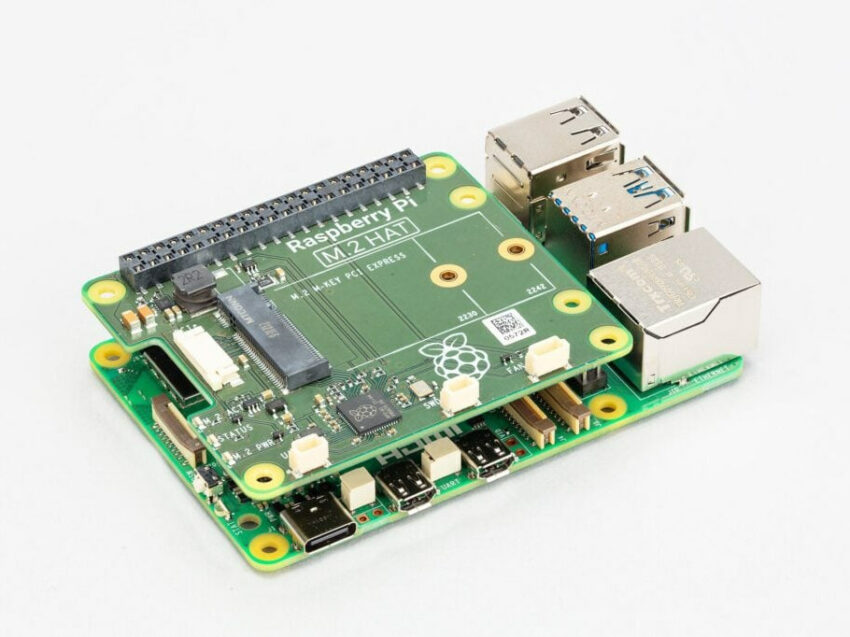
Raspberry Pi has recently shared two significant updates: one about the PCIe FFC (Flexible Flat Cable) connector and the other introducing the new Raspberry Pi HAT+ (HAT Plus) standard. The PCIe FFC connector specifications, previously undisclosed, have now been made available and many boards come out to support it. This connector, featured in the latest Raspberry Pi 5 and likely in future models, has garnered attention from enthusiasts despite the lack of official specifications. Some have even gone as far as developing products like an M.2 HAT for the Raspberry Pi 5 without concrete specifications.
-
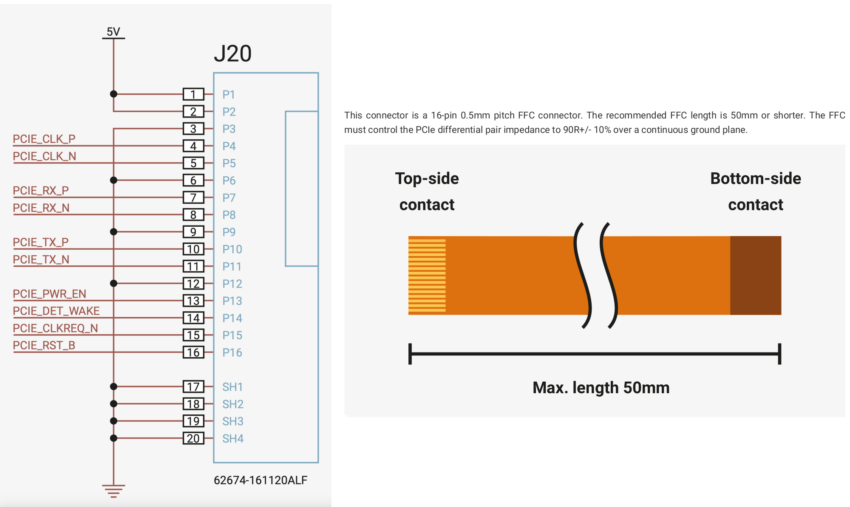
Raspberry Pi 5 PCIe Pinout cable
PCIe FFC
The 16-pin 0.5mm pitch FFC connector, which incorporates a single lane PCIe interface, is a feature that was previously known. However, the recent release has provided additional details including the pinout diagram and recommendations for the FFC cable. The cable is specified to be up to 50mm in length with a controlled impedance of 90 ohms (+/- 10%). Furthermore, the PCIe interface has been reaffirmed to be PCIe Gen 2 in both the specifications and the official announcement. It’s worth noting that despite this confirmation, Jeff Geerling could modify settings to enable PCIe Gen 3 functionality, demonstrating some flexibility in the system.
Raspberry Pi HAT+
Raspberry Pi has introduced also a new standard called HAT+ (Hardware on Top Plus), signaling the deprecation of the original HAT (Hardware on Top) specification established in 2014. The HAT+ specification, although still in a preliminary phase, brings forth several notable changes:
- STANDBY Power State Compatibility: HAT+ boards are now required to be electrically compatible with the STANDBY power state. In this state, the 5V power rail remains active while the 3.3V rail is inactive. This feature is supported by Raspberry Pi 4 and Raspberry Pi 5, unlike older models.
- Flexibility in Physical Dimensions: The specification is less prescriptive regarding the physical dimensions of HAT+ boards. This change allows for greater flexibility in design and form factors.
- Simplified HAT EEPROM Content: The content of the HAT EEPROM is now much simpler, streamlining the board identification and configuration process.
- Support for Stacking: HAT+ introduces a special class of boards that can be stacked, allowing for a maximum stack of two HATs. This enables users to expand their Raspberry Pi’s capabilities further.
- Backward Compatibility: HAT+ boards maintain electrical compatibility with older Raspberry Pi models. However, they may require up-to-date software and firmware to ensure proper functionality.
The introduction of the STANDBY power state in Raspberry Pi boards is particularly significant for power consumption management during standby modes. While WARM-STANDBY, the default mode in Raspberry Pi OS, maintains both 5V and 3.3V power rails active, STANDBY mode powers only the 5V rail. This distinction is crucial in reducing power consumption, especially in scenarios where the Raspberry Pi is powered off. Although some HATs necessitate both 5V and 3.3V power, the new HAT+ add-on boards are designed to operate exclusively in the STANDBY mode with 5V power, ensuring compatibility with this power-saving feature.
One reason for the preliminary nature of the recently released HAT+ specification is the pending update of EEPROM utilities to accommodate the new, simplified EEPROM parameters. This delay contributes to the ongoing refinement process. As a result, the finalized version of the specification, alongside the official M.2 HAT+ board, is expected to launch next year.






